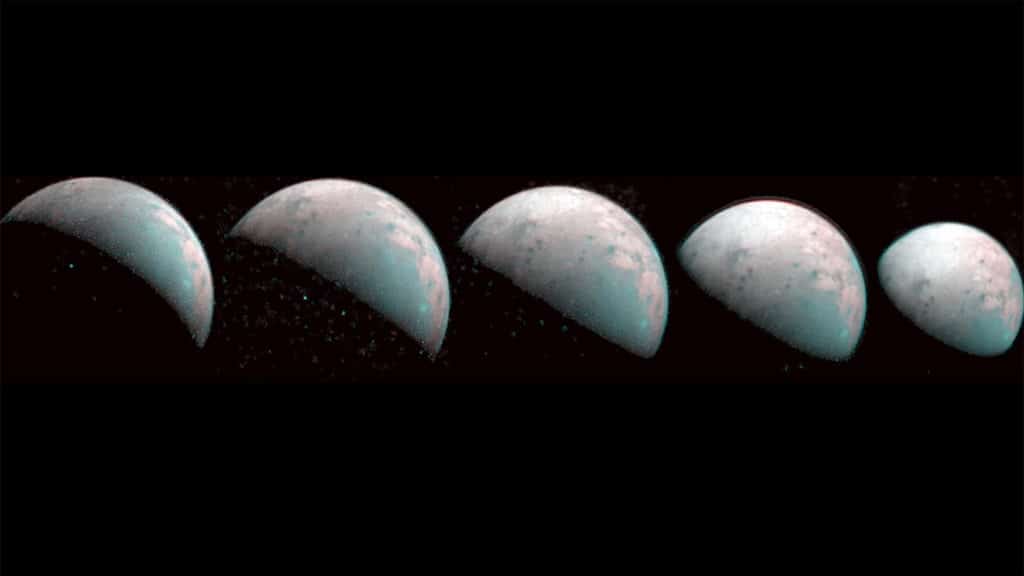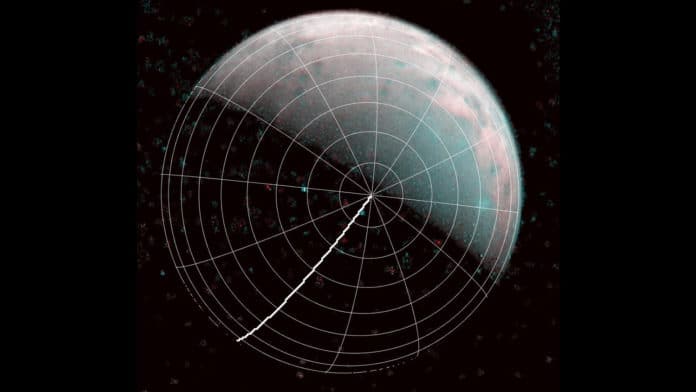The planet Jupiter has a total of 79 identified moons orbiting around it. The largest of these is Ganymede, which was discovered by Galileo Galilei in 1610. Ganymede is the ninth-largest object in the solar system and is larger even than the planet Mercury.
Although it was found a long time ago, there was not enough technology to see it in detail until recently. Now for the first time, the Jovian Infrared Auroral Mapper (JIRAM) instrument of NASA’s Juno spacecraft snapped the first images of Ganymede’s northern frontier. The images, captured during a Jupiter flyby on December 26, 2019, provide the first infrared mapping of the north pole of the massive moon.

Ganymede consists primarily of water ice. It is also the only moon in the solar system with its own magnetic field. Through the images, it was possible to notice an unusual form of ice that exists at the pole, a type that we don’t encounter on Earth. According to NASA, on Earth, the magnetic field provides a pathway for charged particles from the Sun, or plasma, to enter our atmosphere and create aurora seen in the polar regions.
However, as Ganymede has no atmosphere to impede their progress, the surface at its poles is constantly being bombarded by plasma from Jupiter’s gigantic magnetosphere. The bombardment has a dramatic effect on Ganymede’s ice.
Juno found that the ice near both poles of Ganymedean is in amorphous form, that is, it is not a crystalline structure, but a supercooled liquid. In fact, frozen water molecules detected at both poles have no appreciable order to their arrangement, and the amorphous ice has a different infrared signature than the crystalline ice found at Ganymede’s equator.
Analyzing and understanding these structures will provide further clues to understand the evolution of the 79 Jovian moons from the time of their formation to the present day. Jovian is a term that refers to the Jupiter family, which includes Jupiter, Saturn, Uranus, and Neptune.
At the time surrounding its closest approach of Ganymede – at about 62,000 miles (100,000 kilometers) – JIRAM collected 300 infrared images of the surface, with a spatial resolution of 14 miles (23 kilometers) per pixel.
“The JIRAM data shows the ice at and surrounding Ganymede’s north pole has been modified by the precipitation of plasma,” said Alessandro Mura, a Juno co-investigator at the National Institute for Astrophysics in Rome. “It is a phenomenon that we have been able to learn about for the first time with Juno because we are able to see the north pole in its entirety.”
In addition, Juno’s discoveries are preparing the next Jupiter mission. The Juno probe is, for now, the only one to explore the natural satellite that, however, should change soon. The European Space Agency‘s Jupiter ICy moons Explorer mission is scheduled to begin a 3 1/2-year exploration of Jupiter’s giant magnetosphere, turbulent atmosphere, and its icy moons Ganymede, Callisto, and Europa beginning in 2030.
